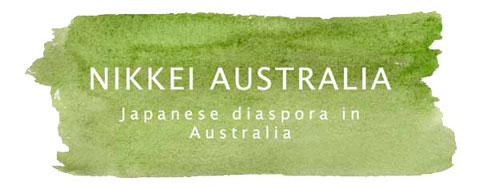Location 10: Cowra Japanese War Cemetery – 10.5 Who’s Buried Here
– Jiro Muramatsu’s Story (Audio: 3 min 14 sec; 3.1MB)
Transcript:
Jiro Muramatsu was 15 years old when his father brought him out to Australia in 1893. His father was one of the earliest Japanese settlers, arriving five years before to set up a business in Cossack, Western Australia. After his father’s unexpected death, Jiro and his older brother took over the business importing Japanese goods. And like his father, Jiro became a successful businessman. Jiro went to school in Australia and picked up English quickly. He was naturalised in 1899. This helped him in business. ‘Coloured aliens’ were banned from owning pearling boat licences. But as a naturalised British subject, Jiro was able to acquire 10 licences, until 1912, when the ban was extended to all people of Asian or African race. However, being ambitious, astute, and influential, Jiro was able to control more than half the pearling fleet. And by 1915, Jiro owned most of the freehold properties in Cossack. As the pearl shell business began to decline in Cossack in the 1920s, Jiro moved to Darwin.
When the Pacific War broke out in 1941, all Japanese people were interned as ‘enemy aliens’. And so was Jiro, despite being naturalised. Jiro and his wife were sent to Tatura internment camp in Victoria. His head clerk, Yoshio Shigeno, was also with Jiro and his family at the camp.
Jiro and his wife didn’t mix well with the other internees and avoided camp activities. He became ill with stomach cancer and died January 7th, 1943. Yoshio, his head clerk also died shortly after. Both Yoshio Shigeno and Jiro Muramatsu are buried here in Cowra.
After the war, Jiro’s widow Hatsu returned to Cossack. By the late 1950s, Cossack was virtually a ghost town, and Hatsu was one of its last inhabitants. Hatsu died in Yokohama, Japan in 1959. She left an estate in Western Australia worth 7670 pounds.
Written by Dr Yuriko Nagata
Read by Kuni Hashimoto
Producer/Sound Design: Masako Fukui
Music Credits: Crossing the Divide by Kevin MacLeod (freemusicarchive.org) CC by 3.0
Impact Lento by Kevin MacLeod (incompetech.com) CC by 3.0
Photo Credits: Photo 1: Jiro Muramatsu’s grave plate in the Japanese War Cemetery; Photo by Mayu Kanamori
Photo 2: Images from Jiro Muramatsu’s Australian Certificate of Exemption from Dictation Test, 1920; NAA: K1145, 1918/137
Photo 3: Yoshio Shigeno’s grave plate in the Japanese War Cemetery; Photo by Mayu Kanamori
筆記録:
1893年、父親に連れられてオーストラリアに来た村松治郎は、当時15歳だった。村松の父親はオーストラリアに先駆けて定住した日本人の一人で、その5年前から、西オーストラリア州コサックにて事業着手のためオーストラリアに来ていた。その父親が不慮の死を遂げたため、村松と兄は、父親が始めた日本からの輸入事業を引き継ぐことになる。村松は父親同様にビジネスで成功した。彼はオーストラリアで学校に通い、早々に英語を身に着けた。1899年には帰化し、それが仕事の助けとなる。当時「有色外国人」は真珠貝採取船のライセンスを持つことができなかったが、村松は帰化した英国臣民(British subject)として1912年まで10隻分のライセンスを保有することができた。1912年にはライセンス保有禁止の対象が、すべてのアジア・アフリカ人種に拡大されてしまうが、村松はその野心、機敏さ、そして影響力でもって、真珠貝採取船の半分以上を管理していた。1915年までには、コサックの所有できる不動産のほとんどが村松のものとなっていた。1920年代に入りコサックでの真珠貝産業が下火になると、村松はダーウィンに移った。
1941年に太平洋戦争が始まり、すべての日本人は「敵性外国人」として施設に収容された。帰化していた村松も例外ではなく、村松とその妻ハツはビクトリア州タツラの収容所に送られた。村松の事業で番頭を務めていたシゲノ・ヨシオも、収容所で村松の家族と共に過ごした。村松とハツは収容所でほかの人とあまり交わることなく、収容所での活動を避けた。村松は胃がんを患い、1943年1月7日に亡くなった。番頭のシゲノもその後、程なくして亡くなった。
村松治郎とシゲノ・ヨシオは2人ともここカウラに埋葬されている。
終戦後、未亡人となったハツはコサックに戻った。1950年代後半までにはコサックは事実上のゴーストタウンとなり、ハツは最後の住人の1人だった。ハツは1959年、日本の横浜で亡くなった。ハツは西オーストラリア州に7670ポンドの地所を残している。
英語原文 永田由利子 PhD
朗読 橋本邦彦
プロデューサー: 福井真佐子
音楽: ケビン・マクラウドの「クロッシング・ザ・ディバイド」(freemusicarchive.org) CC by 3.0
ケビン・マクラウドの「インパクト・レント」(incompetech.com) CC by 3.0
写真: 写真1: 村松治郎の墓標。カウラ日本人戦争墓地にて(撮影:金森マユ)
写真2: 村松治郎のオーストラリアのCEDT(語学書き取りテスト免除証明書)からの画像。1920年(NAA: K1145, 1918/137)
写真3: シゲノ・ヨシオの墓標。カウラ日本人戦争墓地にて(撮影:金森マユ)

The Cowra Voices Audio Archive Project 2023
Cowra Council is the copyright holder of all the audio works in the Cowra Voices Audio Archive. If you would like to reuse or copy any of the materials in this Archive, please contact Cowra Council. Australian copyright law is set out in the Copyright Act 1968 (Commonwealth).
